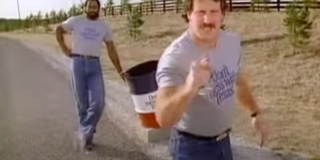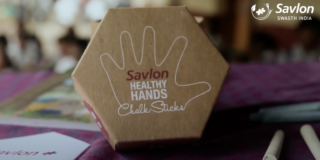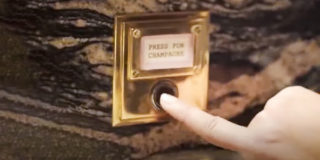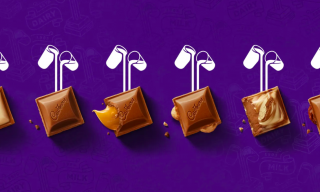Communication is more than just ads and sales. When done right, effective communication can shape society. It goes beyond advertising. Think improving road safety for children or increasing sign-ups for the army. The magic of using behavioural science in advertising can do more than just sell to people, it can help drive real change.
It’s a big bad world of behaviour change communications out there, but for now, we’ve picked out just three top tips from best-in-class consumer behaviour change campaigns. Ready?
Top tip #1: Don’t make people think
Let’s be honest—thinking is overrated.
We often try to persuade people with complex arguments. But oftentimes lack of persuasion is not the issue for people doing (or not doing) certain things. The bigger reason is whether it’s easy, whether it’s memorable, or whether it’s built into their routine.
If you can shortcut that process by making your desired action obvious and natural (what behavioural scientists would call “changing the default”) you can create immediate results.

A great example of this is Nationwide’s ‘PayDay SaveDay campaign in 2019. The campaign links the act of saving to payday—a regular, defined event. This shifts saving from being a vague, end-of-the-month thought to an immediate, start-of-the-month action.
By suggesting that individuals “pay themselves first” as soon as their income arrives, the campaign reframes savings as a primary commitment, similar to settling routine bills.
Pillow brand Tontine took this mantra to a genius level by simply stamping a ‘replace by’ date on their pillows.

Top tip #2: Hijack the ‘in-crowd’
Whether we like it or not, it turns out cliques aren’t just for high school. People are tribal, and by getting inside these microcultures and speaking as one of the members, we can make a lot more impact than speaking as an outsider.
A great example of this is the long-running “Don’t Mess With Texas” campaign. Instead of ‘authority’ speaking down to members of the public and telling them off for littering, they instead positioned anti-littering as a point of Texan pride.
The campaign dates back to 1986 with a classic spot featuring NFL stars Randy White and Ed Jones. Using humour and recognised faces to put the campaign on the side of the public, instead of against them, they saw a 72% reduction in littering on Texan highways.
Don’t Mess With Texas has become a cultural phenomenon and an institution. Many Texans and outsiders alike recognise it, and it has been used on merchandise like t-shirts and bumper stickers. The most recent spot features actor, director, and prolific Texan, Ethan Hawke—as well as some well-executed, self-deprecating humour.
This is a tried and trusted technique that doesn’t just work in ‘the South’. It’s been used to get teens to stop smoking and vaping, get young Australians to care about skin cancer, sell water to metalheads, and beer to fitness fanatics.
Top tip #3: Less talk, more action
Here’s a heretical thought for the communications industry. Sometimes, to solve a problem, you don’t need to communicate anything at all. You just need to solve the problem.
One of our favourite examples of this is Savlon’s Healthy Hands initiative in rural India. The short version of this is Savlon combined school chalk with soap to improve hygiene in schools where children typically ate with their hands right after playing outside.
The real genius though is how ruthlessly they incorporated this into existing consumer behaviour. They realised that just asking one additional step of people – especially active and hungry schoolchildren! – could be a barrier to success. They solved the handwashing problem without kids having to change a single thing that they were already doing.
Another more commercial example is the “Press for Champagne” button at Bob Bob Ricard in London. Get rid of all the little barriers that stop people ordering champagne – like interrupting a conversation or the slight awkwardness of signalling a waiter – and it turns out people order more. A lot more. 95% of patrons used the button.
Co-authored by Social Media Strategist, Laura Griffin, & Senior Strategist, Ross Macdonald.







